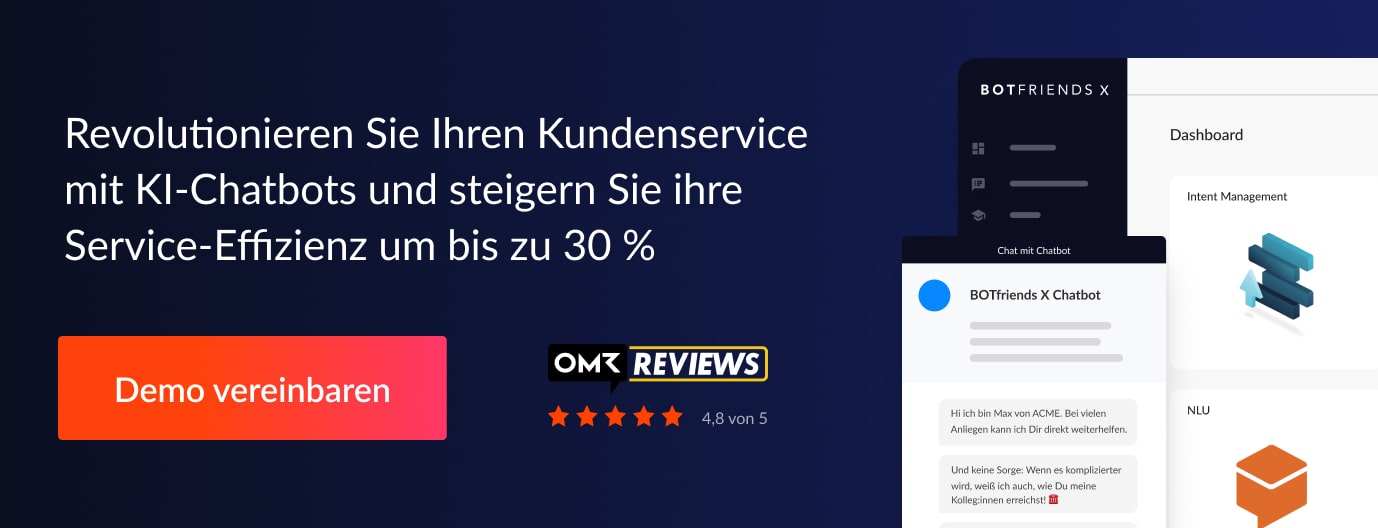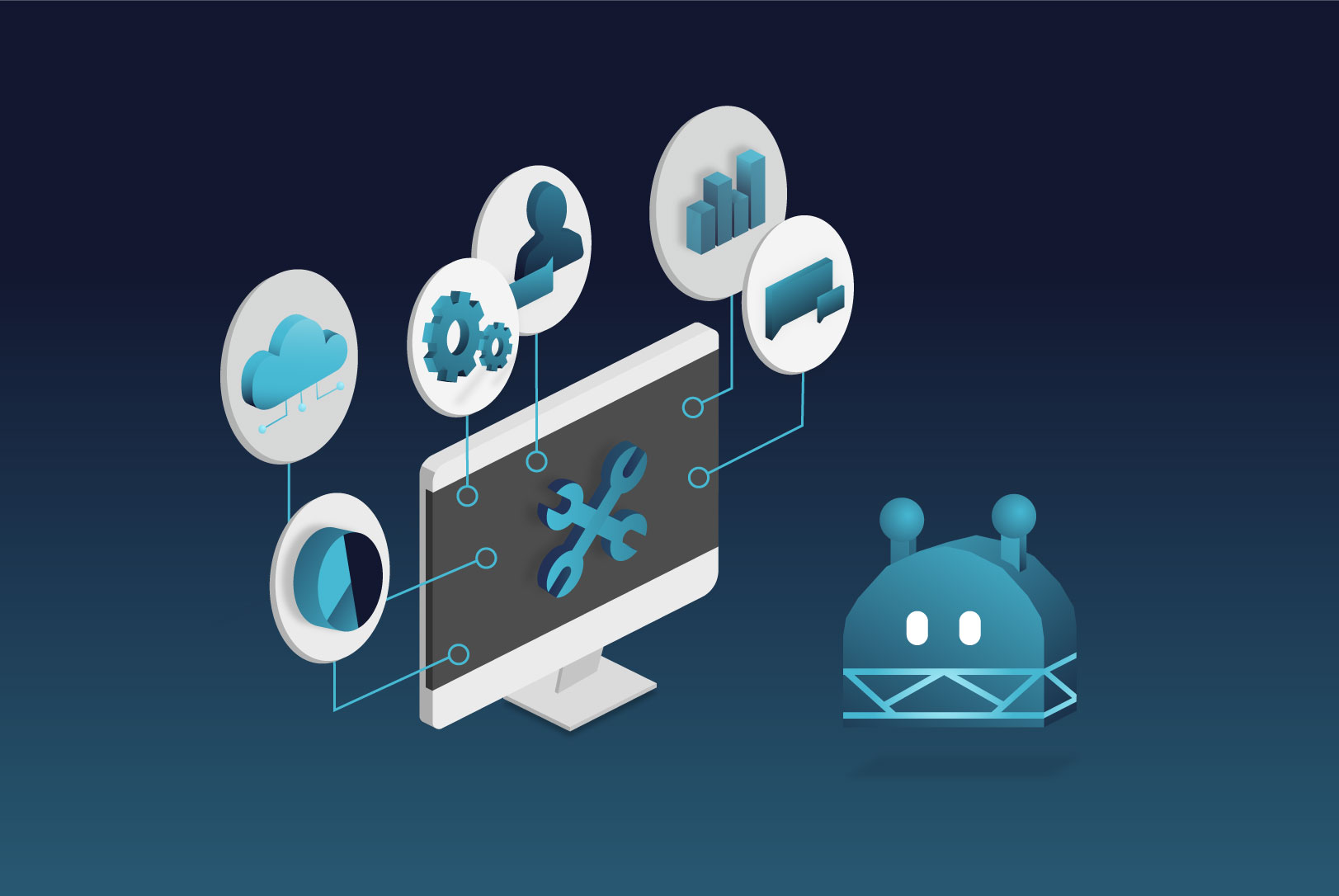Every year again: The meter reading must be submitted to the energy supplier. An annual routine task that can be made easier for both customers and customer advisors of the energy companies. This is because there is often a complicated process behind this task. Some energy providers advertise with customer portals that allow data entries after a user login. Others offer only the telephone way. In most cases, however, this transmission process is frustrating and time-consuming for customers: Either passwords are missing or they are stuck on hold on the phone for a long time.
It does not have to be so complicated and elaborate:
For many customers, direct contact with employees is no longer the main criterion for excellent customer service. At the end of the day, they simply want to have their issue resolved as quickly as possible. And they prefer to use self-service solutions.
"76% of consumers globally prefer to first try to solve issues on their own before contacting support."(freshworks, 2019)
Chatbots are ideal for implementing self - service solutions. This technology can be integrated into live chats or channels such as Facebook Messenger or WhatsApp. There, they automatically answer customer inquiries 24/7 with the help of artificial intelligence. They are also suitable for the use of process-oriented conversations.
One example of how a chatbot can be used as a self-service solution is the chatbot Karl from the energy supplier Süwag. With its help, customers can quickly and easily submit their meter readings automatically on the website in just a few steps.
How exactly this works and what should be taken into account when developing such a chatbot use case is described below:
Step 1: Welcoming the users

The chatbot should ideally already provide information in the first messages about which tasks it can perform and which questions the user can ask. Predefined buttons can be very helpful here, as they guide the user through the process and speed up the input.
Step 2: Date of meter reading
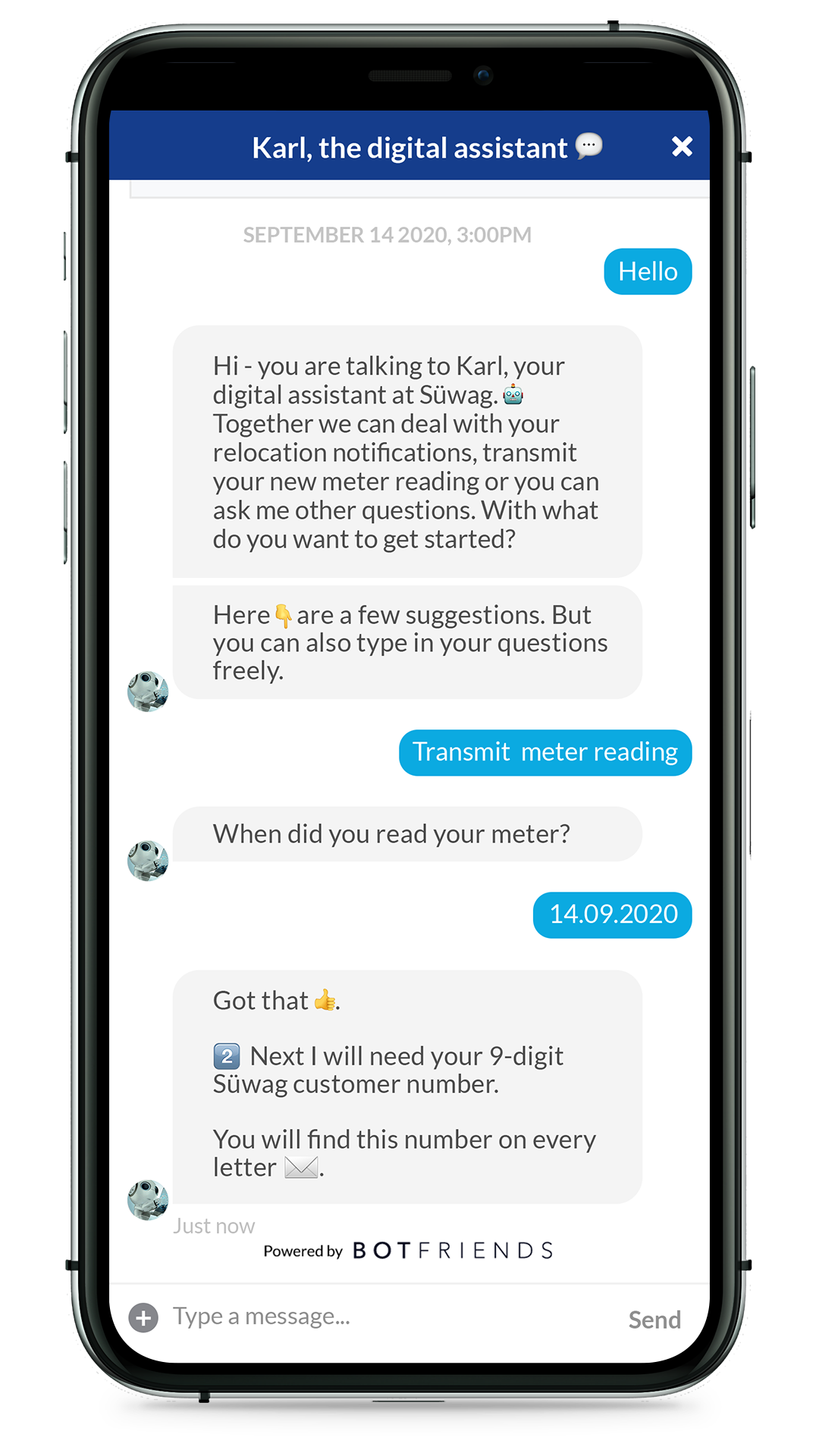
At the beginning, the user is asked for the date of the meter reading. Here it is important to check the logics in the background via code whether the meter reading period is also correct and, for example, not in the future. Often, the meter reading period must not be older than 14 days. In addition, the chatbot should be able to understand and process user input such as "yesterday" or "a week ago today".
Step 3: Identifying the customer
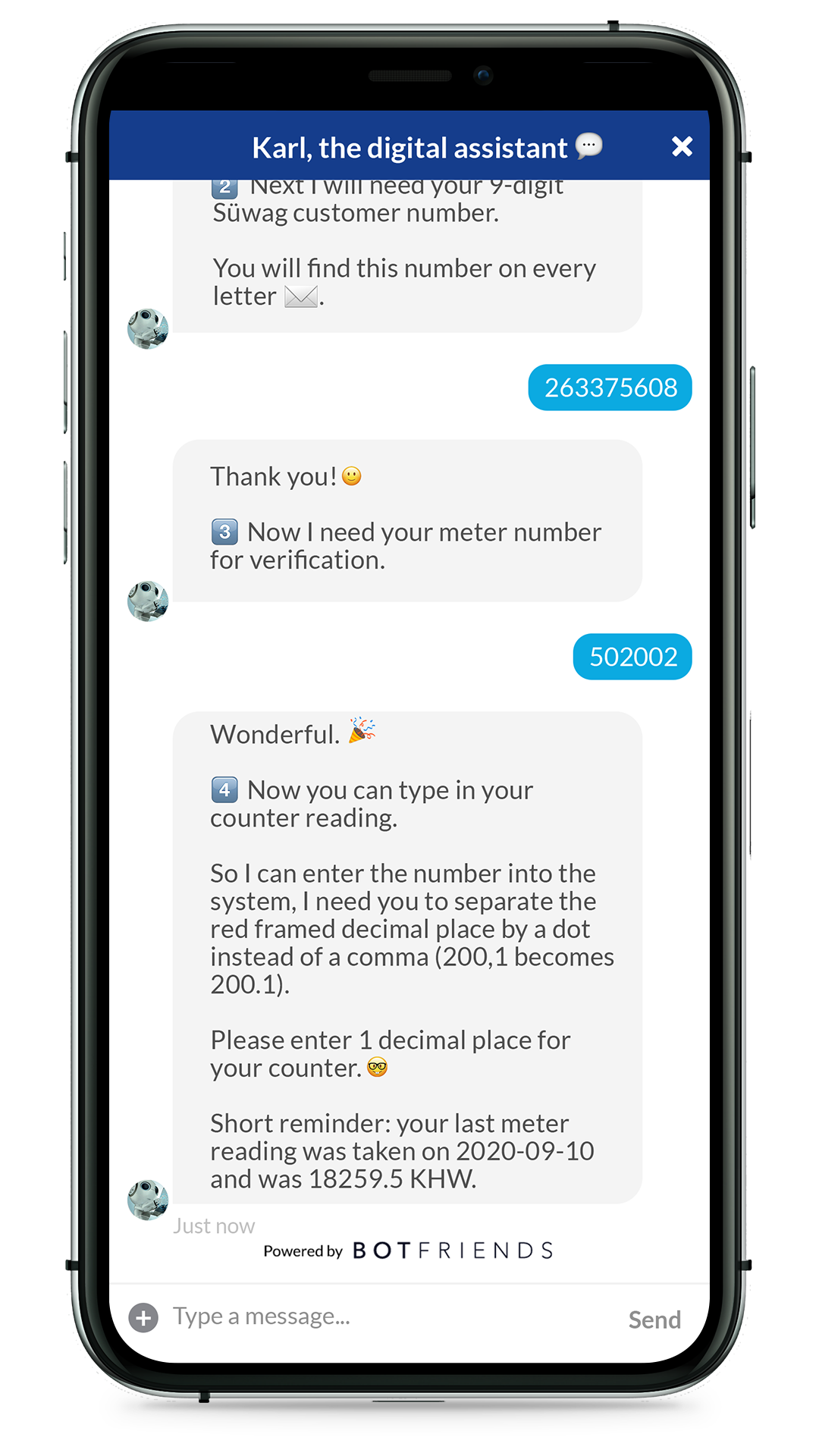
In order to be able to assign the transmitted meter reading to the correct customer, the customer must be identified in advance. The data to be requested depends on the company. As a rule, information such as the customer and meter number is required. It should be communicated to the users as clearly as possible what information is required and where they can find it. For example, the chatbot can indicate how many digits the customer number contains and that it can be found on all letters sent by the company to its customers.
In addition, the chatbot should be able to continue the process if the customer does not have the requested information at hand. For example, the chatbot can ask for alternative forms of identification such as address, birthday, etc.
Step 4: Enter the counter reading

The chatbot was previously connected to the company systems with the help of integrations. Based on the information entered, it can now check in the background which tariffs the customers have chosen (e.g. gas, single tariff, high tariff). Based on this, the corresponding status of the meter can be requested. Again, it is important to communicate as clearly as possible how the meter reading should be entered: With or without decimal place, point or comma, etc. As a helpful orientation, the last meter reading can be displayed, for example.
An even more comprehensive user experience can be offered to customers through the integration of OCR technology. This enables the bot to extract information such as the meter reading from an image. Customers only need to upload a photo of the electricity meter and no longer need to enter the numbers manually.
Step 5: Confirmation
After the meter reading has been transmitted and successfully saved by the system in the background, the user can be offered to receive a confirmation email. This written confirmation not only confirms that the current meter reading was successfully transmitted, but also strengthens confidence in the self-service solution.
Step 6: Handling transmission errors

In the event that the value entered cannot be transmitted to the system, the user's work should not be in vain. To ensure customer satisfaction, we therefore recommend that the information collected be forwarded to a customer service representative for problem resolution.
Step 7: Dealing with unusual values when entering the meter reading

Now and then, the meter reading given deviates unusually from the last value. The reason for this may be a change in consumer:in behavior or simply a typing error during entry.
Therefore, in such cases, the user should be explicitly asked for a reason for the discrepancy. Furthermore, it makes sense to give users the opportunity to re-enter their meter reading and correct it if necessary.
Step 8: Feedback

Last but not least, we think it is essential to ask users for feedback. This is the only way to measure whether the chatbot leads to happier customers. The conversational platform BOTfriends X is suitable for collecting and analysing this data. Using this platform, conversation content can be constantly adapted without programming knowledge and important KPIs (Key Performance Indicators) can be measured.
What else?
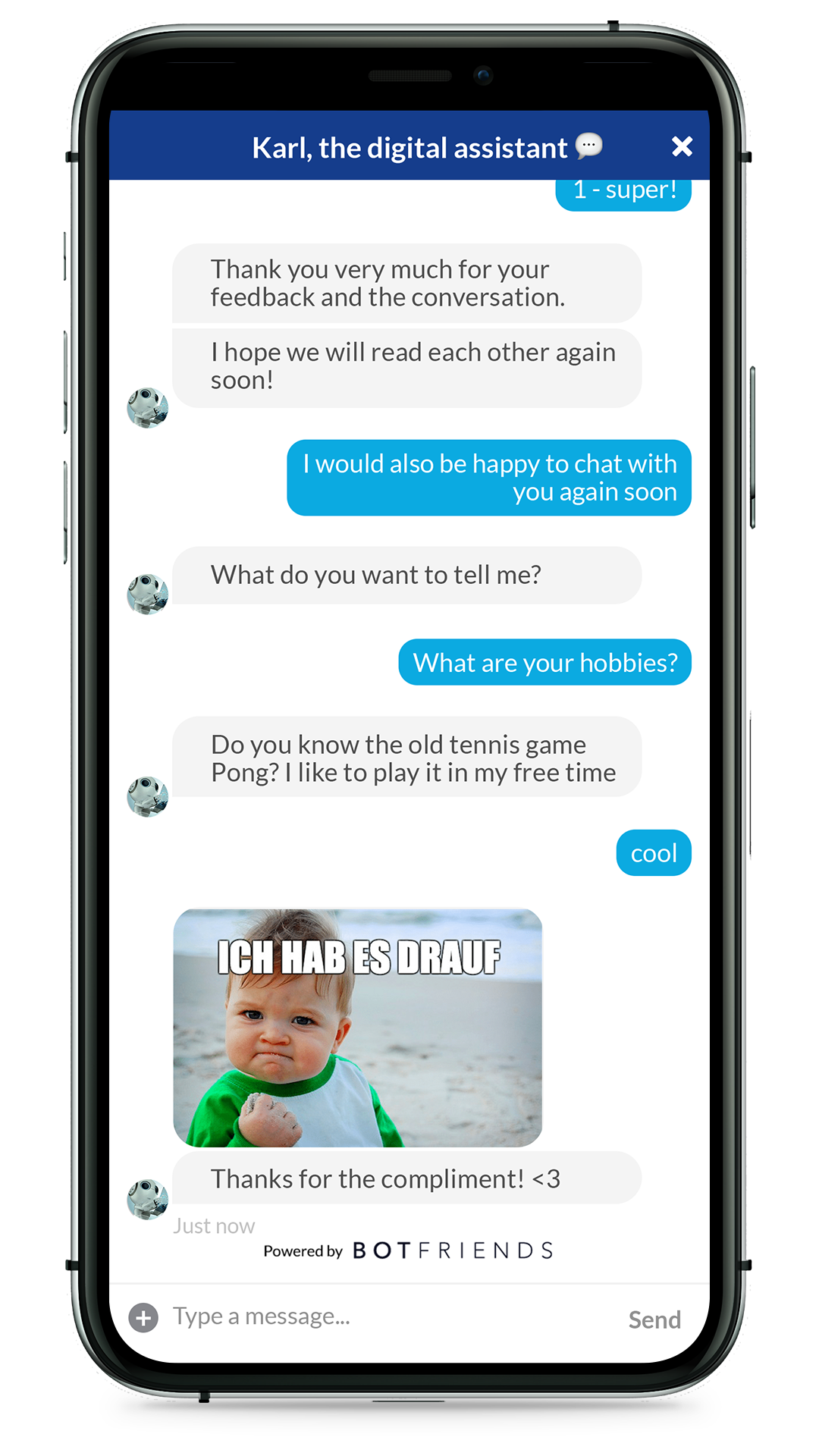
If you want to learn even more about chatbots in the energy industry, you can download our case study from Süwag. Learn more about the project approach and the overall Conversational AI strategy.
